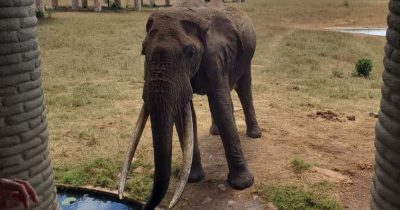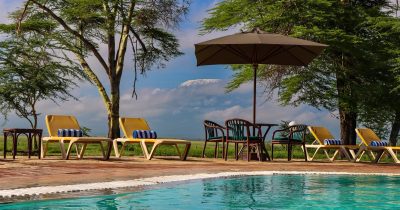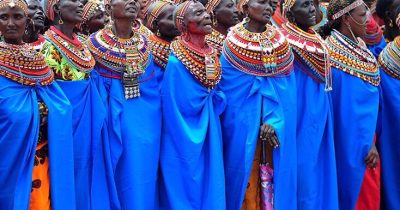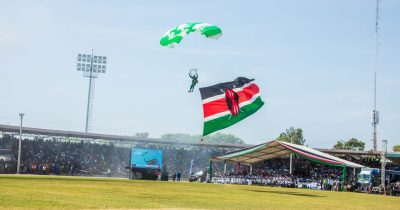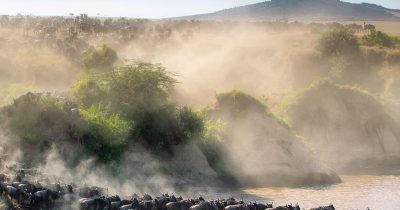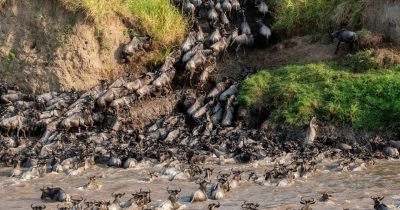Uganda Weather, Climate, and Temperature Conditions
Uganda is famously known as “the Pearl of Africa,” a title this country truly deserves. The government is the land of rich biodiversity and an all-around natural beauty. With its proximity to the Equator, Uganda enjoys a tropical climate that guarantees relatively consistent temperatures all year round. Whether you are trekking with mountain Gorillas, cruising on the River Nile, or visiting the savannah plains of Queen Elizabeth and Murchison Falls National Park. This article titled Uganda weather, climate, and temperature conditions will help to guide you on the best time to visit this country.
Uganda generally experiences tropical climatic conditions with warm weather throughout the year. Each year, Uganda undergoes two distinct seasons—the wet and dry. The wet season in most parts of Uganda lasts from March to May and then from October to November, bringing heavy rainfall, particularly in Uganda’s central and western regions.
The dry season occurs from June through September, while short dry months are noted in December, January, and February. During these drier months, minimal rainfall is observed, allowing game tracks or forest trails to remain passable.

The temperature levels
Lying astride the Equator, Uganda experiences varying temperatures depending on the months and regions. The average temperature in Uganda ranges from 17 degrees Celsius, commonly felt in Southwestern Uganda, to 25 degrees Celsius in the Northeast.
In the hottest months (December, January, and February), temperatures rise to 28 degrees Celsius, particularly around Kampala Capital City. The coolest months in Kampala are June and July, with average temperatures dropping to about 24 degrees Celsius. In the highland areas, temperatures can fall to 16 degrees Celsius during June and July. These cool temperatures provide a refreshing escape from the heat.
Uganda’s dry season, from June to August and December to February, offers the most pleasant weather for touring. With enjoyable temperatures, dry conditions, and clear skies, these months afford tourists a relaxing and pleasurable experience.
During the dry months, Uganda transforms into a playground for adventure enthusiasts. It’s the ideal time for wildlife tours, gorilla trekking safaris, chimpanzee tracking, guided hikes, and mountain climbing, promising an exciting and memorable experience you won’t want to miss. The dry season, from June to August and December to February, offers the most pleasant weather for touring. With enjoyable temperatures, dry conditions, and clear skies, these months afford tourists a relaxing and pleasurable experience.
Weather conditions in Northern Uganda compared to the Southern region and neighboring countries
Uganda’s northern region features distinct weather conditions that differ from those in the southern region. Northern Uganda experiences hot and dry climatic conditions, especially from December to March. During these months, temperatures rise to about 32 degrees Celsius, with minimal rainfall of around 40mm per month. The dry winds from the northeast contribute to the arid conditions in the northern part of Uganda.
Uganda’s southern region, including Lake Victoria, experiences equatorial climatic conditions. This area records more humid conditions with high rainfall amounts throughout the year. Two rainy seasons occur in the southern region, the longest lasting from March to May, while the shorter rainy period falls in October and November. The southern region experiences cool temperatures, averaging between 27 and 29 degrees Celsius, influenced by the area’s altitude and proximity to Lake Victoria, a freshwater lake.
The central and southwestern parts of Uganda feature highlands and mountain ranges, recording temperate climatic conditions with lower temperatures than the north and south. At night, temperatures are cooler due to the high altitudes. This is because as altitude increases, the air becomes thinner and less able to retain heat, resulting in cooler temperatures. Unlike most regions, northern Uganda is hotter and drier, with a prolonged dry season. In contrast, the southern region tends to be more humid, consistently recording yearly rainfall. The central and southwestern highlands, on the other hand, experience more moderate temperate climatic conditions.
Weather and Climatic Conditions
Uganda averages about 1200mm of rainfall, but weather varies by tourist destination, including Bwindi Impenetrable National Park, Kibale National Park, Mgahinga Gorilla National Park, Queen Elizabeth National Park, Murchison Falls National Park, Lake Mburo National Park, Kidepo Valley National Park, Semuliki National Park, and Kisoro.
Wet but mild conditions prevail at Bwindi altitudes of 1300 to 2462m. Daytime temperatures are around 23 °C, and nighttime lows are 11 °C, dropping 6.5 °C per 1000 m gained.
Kibale National Park is moist and temperate, with day temperatures of 27 °C and night lows of about 15°C, at 928 to 1568 m.
Mgahinga Gorilla National Park, at 2227 to 4127m, records daytime highs around 20 °C and nighttime lows of 9 °C, with a 6.5 °C drop per 1000m gained.
Queen Elizabeth National Park offers warm conditions, reaching 29 °C during the day and falling to 17 °C at night. Between 615 and 1187 m, Murchison Falls National Park has tropical conditions with daytime highs of 31 °C and nighttime lows of 18°C. Lake Mburo National Park, at 1220 to 1828 m, receives 500 to 1000 mm of rain annually, peaking in March to May and September to November. Kidepo Valley National Park, at 1000 to 2750 m, experiences hot, dry conditions, peaking at 32 °C during the day.
Semuliki National Park, at 670 to 1330m, has tropical conditions with high humidity. It averages 1200 mm of annual rainfall and daytime temperatures of 28 to 30°C.
Kisoro, at 1759m, records cool temperatures, with daytime highs of 20 to 22 °C and night lows of 10- 12 °C.
What to wear and pack for Uganda tours
When planning a tour in Uganda, packing the right essentials is key. Bring waterproof walking boots or shoes, insect repellents, a first aid kit, long trousers, long-sleeved shirts, a safari hat, gardening gloves, a sweater, and socks to be completely prepared for your adventure.
Also, could you include bottled water, sunscreen, a daypack, spare batteries, a rain jacket, long pants, energy-boosting snacks, toiletries, and binoculars?
Planning a successful tour in Uganda
When planning a trip to Uganda, choosing the destination’s weather and climate conditions relevant to the activities you want to pursue is essential. The dry season is ideal for exciting adventures like mountain gorilla trekking, climbing, game drives, chimpanzee tracking, and forest walks. Understanding these factors will make you feel informed and ensure a successful and enjoyable safari. Being prepared for these conditions will give you the confidence to enjoy your trip thoroughly.
In conclusion, Uganda’s weather patterns, climate variations, and temperatures are inconsistent. Therefore, understanding these factors and being prepared for their variability is crucial for organizing your upcoming safari. It’s essential to be cautious and attentive to these changes to ensure a smooth and enjoyable trip. This awareness will make you feel responsible and ready to handle Uganda Weather, Climate, and Temperature Conditions.

